Calculus for Kids April 24, 2015 (Fridays)
This week, we created the same object in several different ways. The goal was still to make shapes out of shapes, but this time, we compared and contrasted different ways of doing so. Do we place pieces at random like a pile of rocks making a cone, or do we tessellate them in a careful pattern? Do we use small pieces, large pieces, or vary the sizes? Do we use a continuous (pliable) medium like clay, or discrete pieces like LEGO blocks?
Here is this week’s Spark in PDF. This will help you get started on activities.
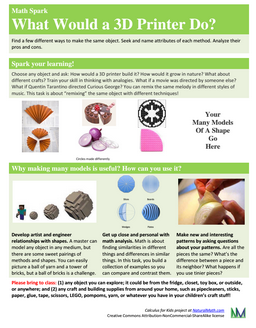
Serrin is making a braid out of 3 pipe cleaners. She already made one, and off-camera she’ll make a third braid, because…

…This way she can make a braid out of braids. It takes 3 pipe cleaners to make a braid, and three braids to make a braid out of braids, which makes 3^2 (three to the power of two) or 9 pipe cleaners. You can see this braid out of braids between 3 LEGO blocks and a cube of 3^3 (three to the power of three) LEGO blocks we made with Maya and Serrin earlier. The braid of braids fits there, because the power of two represents 2D, while the cube represents 3D and 3 single pink blocks represent 1D (especially if you line them up).
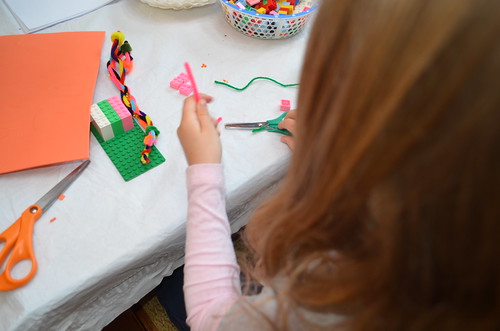
Nobody was eager to suggest a shape for everyone to build, so Maria suggested a snail, because it appeared in several crafts before and was a simple enough but interesting shape. Let’s start with 1D medium, the pipe cleaners.
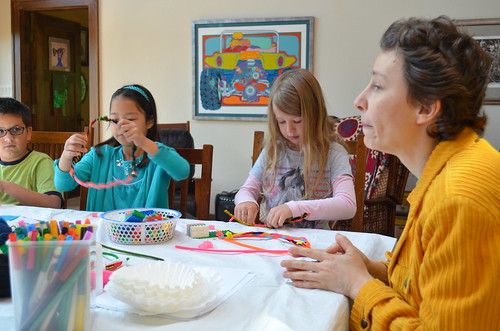
Her own project done, Serrin started using pipe cleaners and other media to make snails.
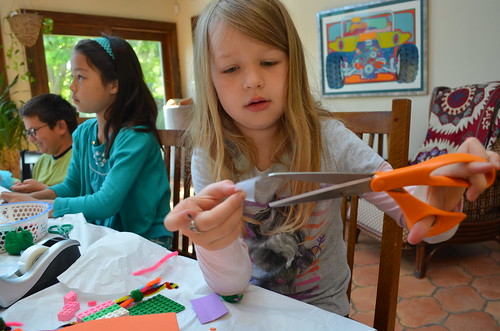
Here a single LEGO block on top of 4 blocks represent an approximation of a 3D shell. The 2D pink sticky note on the bottom stands for the body. We talked on how math is similar to impressionist or abstract art, and this is an excellent example.

Hannah is testing and bending a 1D pipe cleaner while Owen is imagining how to make a snail from a multitude of them. He started with a tiny multi-colored ovoid, about half as long as his thumb, then the project grew.
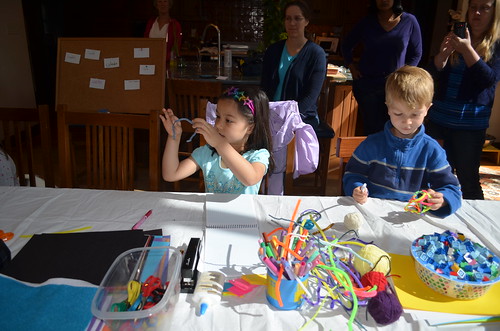
Hannah made a 2D tiny green snail from yarn stapled together. Hard to see, but very soft and cuddly!
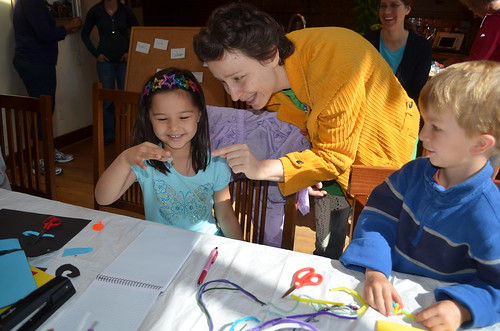
Hannah made another snail; a 3D purple sphere yarn ball topped with a 1D curved orange pipe cleaner for the snail’s antenna. Check out Hannah’s triumphant and crafty smile. That’s a math face for when you find a simple solution to a complex problem. Simplicity is a big mathematical value, and solving problems in simplest ways possible is considered a beautiful thing. “Everything should be made as simple as possible, but not simpler” – Einstein, paraphrased by the composer Sessions (because music shares this simplicity value with math).

Owen sitting quietly alone working on his snail. When transitioning between activities, leave some time for kids to get to a place where they can pause their projects gracefully and hold their thoughts.

Ecstatic smile, Priyesh! Maya and Priyesh are discussing their LEGO snail projects and just chatting. Priyesh focused on shape, making his snail sturdy and “more three-dimensional” as he put it, and Maya focused on the pattern of colors, analyzing the layers.
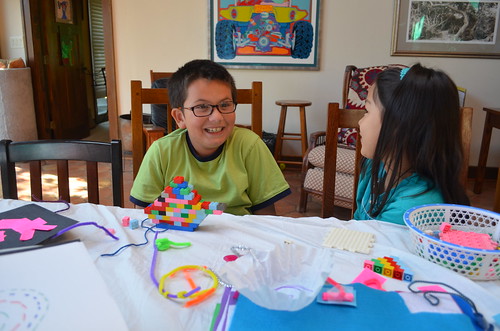
Julianne wished she had a real snail to draw it just the way real snails are. Maria helped in a different way: offering shapes that Julianne could choose for parts. Then Julianne integrated the snail out of parts, choosing which to draw next, which shape it will be, and which size of that shape. This “calculus way to draw” (making shapes out of simpler shapes) helps kids who want to be precise – another value some forms of art share with mathematics!
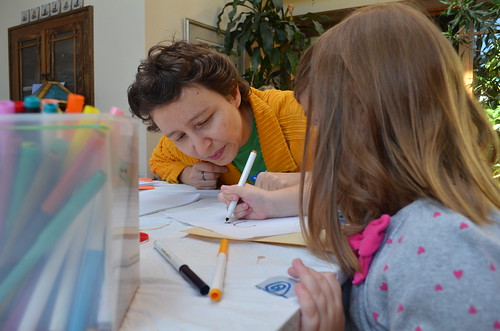

Michele integrated her (2D) snail using pink sticky notes, dramatic on black construction paper. Check out how curves are made of rectangles.
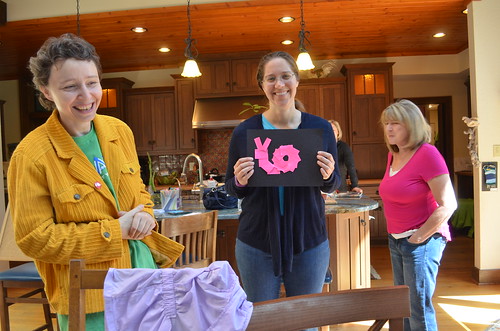
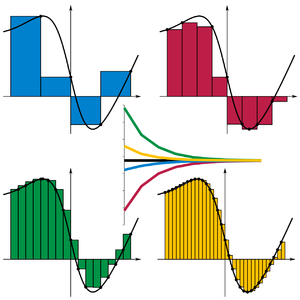
Image credit: Wikipedia article on Riemann sums.
The grand imaginary play battle – Snail vs. Snail, now in 3D! Maya and Priyesh were at it for a while, building their snails up and then pretend-battling them. Making your own pretend-worlds is what children – and mathematicians! – love to do.
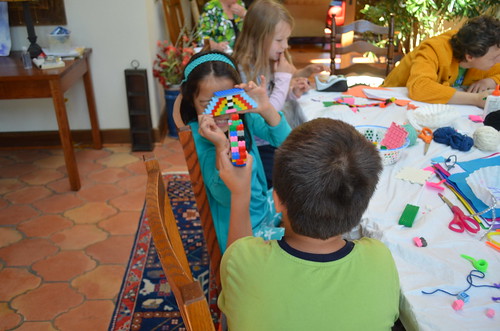

Image credit: Wikipedia article on the made-up world of imaginary (complex) numbers. The picture looks like a battle of rainbow snails, but it’s a graph of sin(1/z).
This time, we had different rules for our Math Words: people got to pin the word if they did not know it yet. Children are generally okay saying they don’t know something, and this game celebrates awareness of not-knowing, then learning.
“Wave at me if you made a snail using only 1 color! Now, if you used more than 1 color to “integrate” or put together?” Many kids wanted to write the word integrate, so each wrote a letter in a different color, integrating the word itself out of letters. Here Serrin and Hannah are about to put up “Approximation” and Owen, “Abstract.”
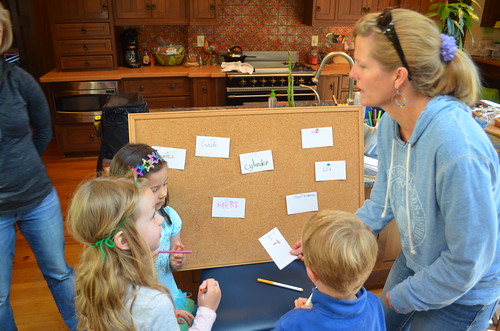
We had a cute little scene about abstraction. Maria asked for people to wave if they made a model somewhat resembling a real snail. Then to wave if their model was pretty far from real snails. “Mine was nothing like a real snail, AT ALL!” – very happily explained a kid, and several others nodded. Then all children started to wave. This is a happy attitude to keep, for both math and art. A formula for a parabola does not resemble the ball flying out of your hands… The formula is abstract, like a model of a snail that does not look like a snail at all.
We are sitting on the ground: “What would make our approximations more perfect?” The participants had ideas for making shapes more precise, but also for artistic merit: “Find enough LEGO of only one color; use smaller pieces or make a larger project; use a better pattern; observe real snails!” Julianne made a passionate speech about following the nature and not messing with it too much.
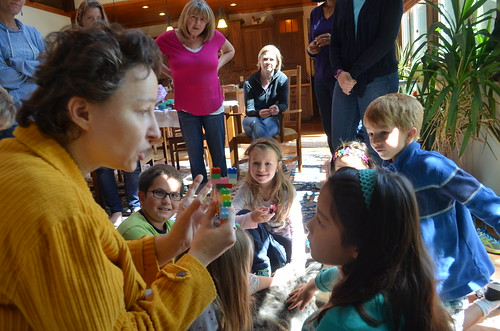
Owen: “My snail could have used a pattern…” Maria: “Look at all the randomness!”

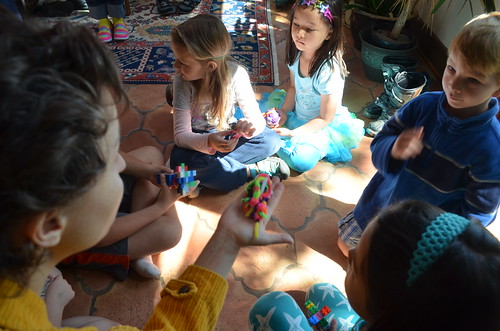
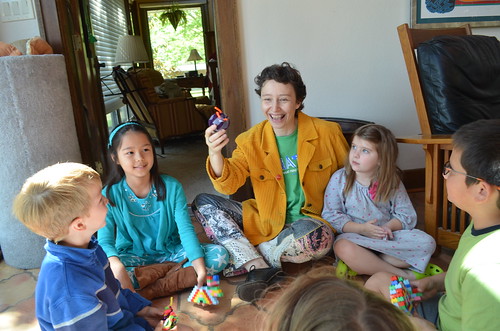
We have a new videographer! Thank you. Videos coming up.

Maria and Jewell are discussing Julianne’s stories that Jewell was recording.

We are integrating a spiral snail out of our own hands. Try to work out your math with your own body – it makes for a very direct understanding, like nothing else does.
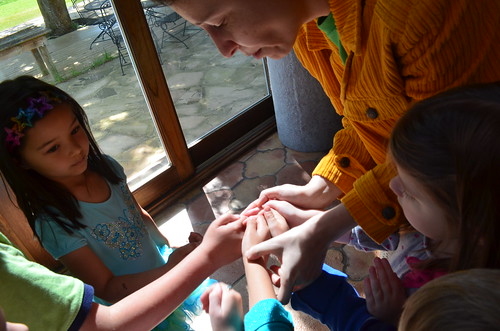
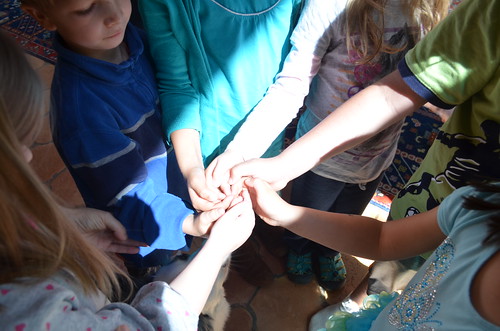
The sun made a piece of impressionist art out of our snail.

Making people pizza with our legs. It’s a… math circle! A child: “We are not pizza slices, we are lines between the slices.”

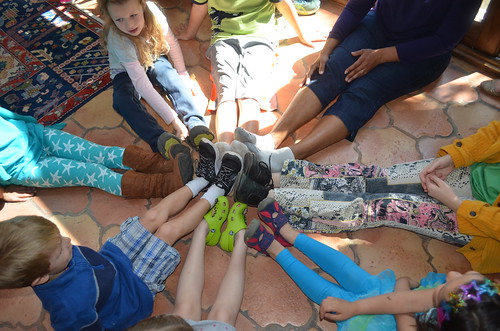
All the Math Words.

Video time: Watching “Infinity Elephants” by a mathemusician Vi Hart.


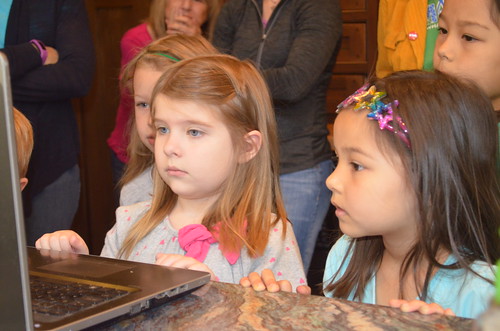
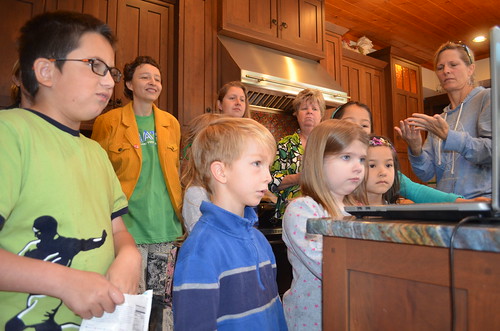
It’s nice to finish with a movie, because it takes less energy from the tired kids, but leaves them focused, calmer, and inspired for their trip home.
Photos by Erin Song, captions by Erin Song and Maria Droujkova, Math Spark by Kalid Azad, Shelley Nash, and Maria Droujkova.
Related Posts
Posted in Make







I would love to get my 7YO daughter involved in this or something similar. She has a strong affinity for math and spacial manipulation.
Please let me know what’s available.
Thanks,
Kenya
919-649-3672
Kenya, glad you are interested! We can run something if you have a group of parents and children you can put together. If not, wait a bit – I will let you know when we next form groups.